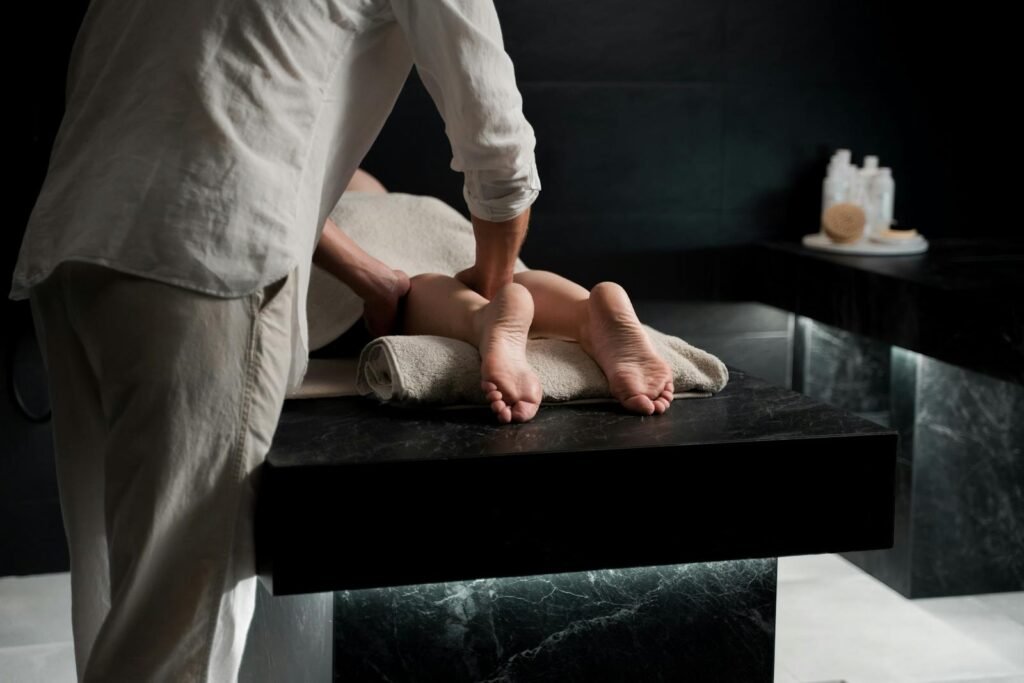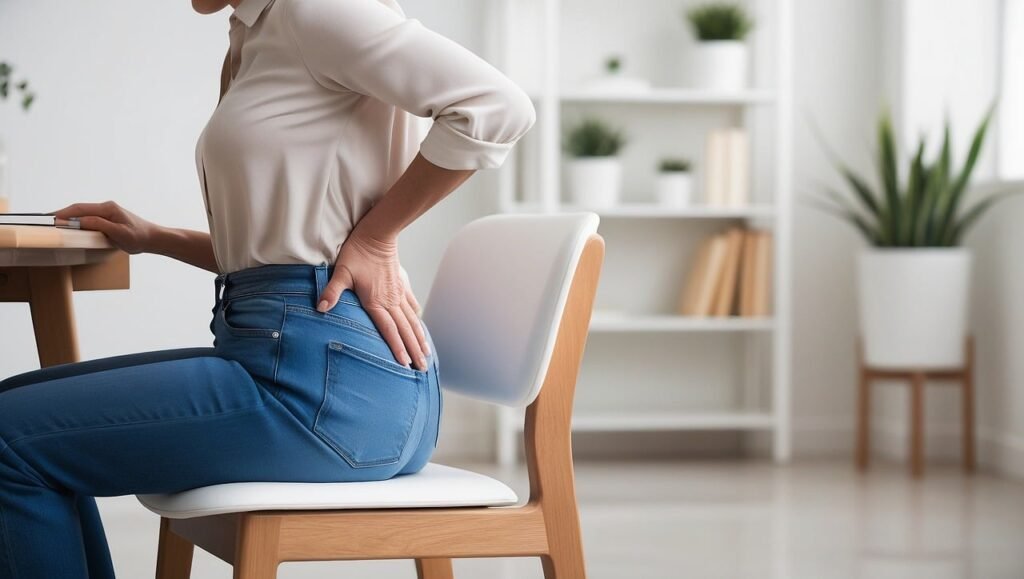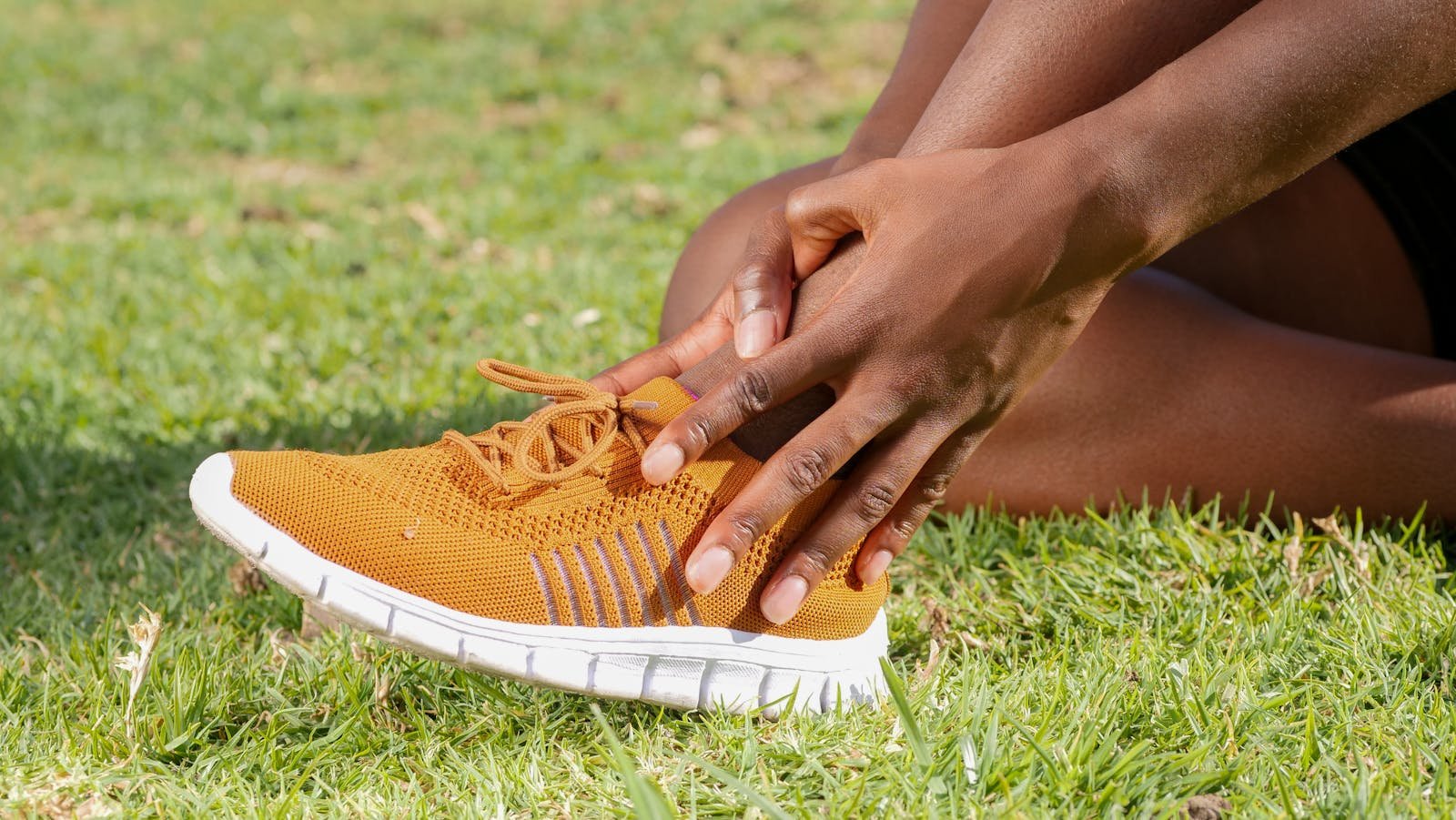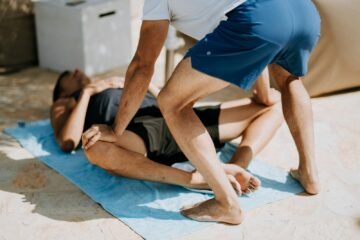Feet and back pain are common complaints that many people experience at some point in their lives. While they may seem like separate issues, there is a significant relationship between foot health and back pain. Understanding this connection can help you find effective treatments and improve your overall well-being. In this article, we will explore the causes, symptoms, and solutions for feet and back pain, with a special focus on how conditions like flat feet can contribute to back problems.
The Connection Between Feet and Back Pain
The feet play a crucial role in how the body supports itself and moves. When there are issues with the feet, such as flat feet or other deformities, it can lead to altered posture and gait. This, in turn, puts extra stress on the back, potentially causing pain. Many patients I’ve seen in my practice have reported improvements in back pain after addressing their foot issues.
Common Causes of Feet and Back Pain
- Flat Feet: Flat feet, or fallen arches, occur when the arches of the feet do not develop properly. This condition can lead to improper alignment of the legs and back, causing discomfort and pain in both areas.
- Poor Footwear: Wearing shoes that lack support or are ill-fitting can exacerbate foot and back pain. The best shoes for feet and back pain often have good arch support and cushioning to distribute weight evenly.
- Inactivity: A sedentary lifestyle can weaken the muscles that support the back and feet, leading to pain and discomfort. Regular movement is essential for maintaining overall body health.
- Injuries: Acute injuries, such as sprains or fractures in the feet, can lead to compensatory changes in posture, resulting in back pain.
- Conditions like Diabetes: Conditions such as diabetes can lead to neuropathy, which may cause tingling or numbness in the feet. This can contribute to pain in the back if proper posture is not maintained.
Symptoms of Feet and Back Pain
The symptoms of feet and back pain can vary widely, but some common indicators include:
- Tingling in Feet and Back Pain: This sensation can occur when nerve pathways are affected by posture or foot conditions.
- Numbness in Feet and Back Pain: A loss of feeling in the feet can lead to poor balance and increased risk of back injury.
- Sore Feet and Back Pain: General discomfort in the feet can translate to pain in the lower back due to compensatory movements.
- Swollen Feet and Back Pain During Pregnancy: Many pregnant women experience swelling in the feet, which can lead to back pain due to weight gain and changes in posture.
Treatment Options for Feet and Back Pain

Addressing both feet and back pain requires a multi-faceted approach. Here are some effective strategies:
1. Proper Footwear
Investing in the best shoes for flat feet and back pain is essential. Look for shoes with:
- Good arch support
- Cushioned insoles
- A wide toe box
2. Insoles for Flat Feet
Custom insoles can help support the arch of the foot and align the body properly. This can alleviate pain in both the feet and the back.
3. Physical Therapy
A physical therapist can provide exercises tailored to strengthen the muscles in the feet and back. They can also teach proper body mechanics to reduce strain on both areas.
4. Stretching and Strengthening Exercises
Incorporating stretching and strengthening exercises into your routine can improve flexibility and reduce pain. Here are a few exercises to consider:
| Exercise | Description |
|---|---|
| Calf Stretches | Stand facing a wall, place hands on it, and stretch one leg back. |
| Foot Roll | Use a tennis ball to roll under your foot to relieve tension. |
| Core Strengthening | Engage in exercises like planks to support the back and core. |
5. Chiropractic Treatment
Chiropractic adjustments can help improve spinal alignment and relieve back pain. This treatment can also address any foot-related issues affecting the spine.
When to Seek Medical Attention
If you experience severe pain or symptoms that do not improve with home treatments, it is important to consult a healthcare professional. This is especially true if you have numbness or tingling in your feet, as these can be signs of nerve compression or other serious conditions.
Also Read: Lower Back Pain Severe: Causes, Treatments, and Tips for Relief
Understanding Specific Conditions Associated with Feet and Back Pain
To effectively address feet and back pain, it’s crucial to understand the specific conditions that may be causing these symptoms. Let’s delve deeper into some of the common issues that can lead to this pain and how they are interrelated.
Flat Feet and Back Pain
Flat feet, or fallen arches, can significantly impact your overall posture and gait. When the arch of the foot is flattened, it can lead to overpronation, where the foot rolls inward too much during walking or running. This altered biomechanics can cause a chain reaction, leading to:
- Increased Stress on the Lower Back: The body compensates for the lack of support from flat feet, often resulting in a misaligned spine and increased stress on the lower back.
- Pain in the Knees and Hips: The effects of flat feet often extend beyond the back. Patients frequently report knee and hip pain due to the misalignment caused by poor foot mechanics.
Cold Feet and Back Pain
Cold feet can sometimes accompany back pain, particularly in individuals with poor circulation or nerve issues. Conditions like neuropathy, often seen in diabetes, can lead to sensations of coldness and tingling in the feet, while simultaneously causing discomfort in the lower back due to altered posture and body mechanics.
- Diabetes and Back Pain: People with diabetes may experience a condition known as diabetic neuropathy, which can lead to pain in the feet and legs. This condition can also affect balance and stability, leading to back pain.
Tingling Feet and Back Pain
Tingling in the feet, often described as “pins and needles,” can indicate nerve involvement. This symptom may be linked to back issues such as herniated discs or sciatica, where nerve roots are compressed.
- Herniated Discs: A herniated disc can press on spinal nerves, leading to pain radiating into the feet. Patients often experience a combination of back pain and tingling sensations in the legs and feet.
- Sciatica: Sciatica refers to pain that radiates along the path of the sciatic nerve, which runs from the lower back down to the legs. This condition often causes tingling and pain in the feet, while also being accompanied by back pain.
Best Shoes and Insoles for Feet and Back Pain
Choosing the right footwear is essential for managing both foot and back pain. The best shoes for feet and back pain should provide adequate support and cushioning. Here are some characteristics to look for:
- Arch Support: Proper arch support can help alleviate the stress on the feet and reduce the likelihood of back pain. Look for shoes specifically designed for flat feet if that is a concern.
- Cushioned Insoles: Shoes with cushioned insoles can help absorb shock, reducing the impact on both feet and back during daily activities.
- Stability Features: Shoes that offer stability features help prevent overpronation, which can lead to additional stress on the back.
Recommended Footwear and Insoles
| Type of Shoe/Insole | Description |
|---|---|
| Motion Control Shoes | Designed for overpronators, offering extra support. |
| Orthotic Insoles | Custom or pre-made insoles that provide arch support. |
| Cushioned Sneakers | Ideal for daily wear and offer shock absorption. |
| Hiking Boots | Provide ankle support and stability for outdoor activities. |
Links to Purchase
- Orthotic Insoles on Amazon
- Best Shoes for Flat Feet on Zappos
- Motion Control Running Shoes at Runner’s World
Treatment Strategies for Feet and Back Pain
- Chiropractic Care
Chiropractic treatment can be beneficial for patients experiencing feet and back pain. Chiropractors use hands-on spinal manipulation to improve alignment and alleviate pain. This approach can help with:
- Spinal Alignment: Proper alignment reduces pressure on nerves and can alleviate pain in both the back and feet.
- Range of Motion: Chiropractic adjustments can enhance the range of motion in the spine, which may improve overall movement and reduce discomfort.
- Massage Therapy
Massage therapy can be effective in relieving tension in the muscles of the back and feet. Benefits of massage therapy include:
- Muscle Relaxation: Massage can help release tight muscles and improve circulation, which may alleviate pain.
- Stress Relief: Reducing overall stress levels can contribute to improved pain management.
- Exercise and Rehabilitation
A tailored exercise program can help strengthen the muscles supporting the feet and back. Engaging in regular physical activity promotes flexibility and helps maintain a healthy weight, reducing strain on the spine. Here are some exercises to consider:
| Exercise | Description |
|---|---|
| Heel Raises | Stand on the edge of a step and raise your heels to strengthen calf muscles. |
| Bridges | Lie on your back with knees bent and lift your hips to strengthen the lower back. |
| Walking | Regular walking can improve overall health and reduce pain in both the feet and back. |
- Medication and Pain Management
Over-the-counter pain relievers, such as ibuprofen or acetaminophen, can provide temporary relief for feet and back pain. For chronic conditions, a healthcare provider may prescribe stronger medications or recommend physical therapy as a more long-term solution.

Long-Term Management of Feet and Back Pain
Managing feet and back pain effectively often requires a comprehensive approach that includes lifestyle changes and ongoing care. Here are some tips for long-term management:
- Maintain a Healthy Weight: Excess weight can put additional strain on both the feet and back. Maintaining a healthy weight through diet and exercise is essential.
- Stay Active: Regular physical activity can help strengthen muscles, improve flexibility, and maintain proper body mechanics. Aim for at least 150 minutes of moderate exercise per week.
- Practice Good Posture: Being mindful of your posture while sitting, standing, and walking can help reduce strain on your back and feet. Ergonomic chairs and proper desk setups can also be beneficial.
- Regular Check-ups: Schedule regular visits with a healthcare professional, such as a podiatrist or chiropractor, to monitor and address any ongoing issues with foot or back pain.
Conclusion
Feet and back pain are interconnected issues that can significantly impact your quality of life. Understanding the causes and symptoms of these conditions is crucial for effective treatment and management. By choosing the right footwear, engaging in regular exercise, and seeking professional help when needed, you can take significant steps toward alleviating discomfort in both areas. Remember that managing these conditions requires a comprehensive approach that addresses both foot health and overall body mechanics.
Additional Resources
For further information on managing feet and back pain, consider visiting these authoritative sites:
By taking proactive steps and understanding the relationship between your feet and back, you can improve your overall health and reduce pain. Let me know if you need more specific information or if you’d like to continue further!




